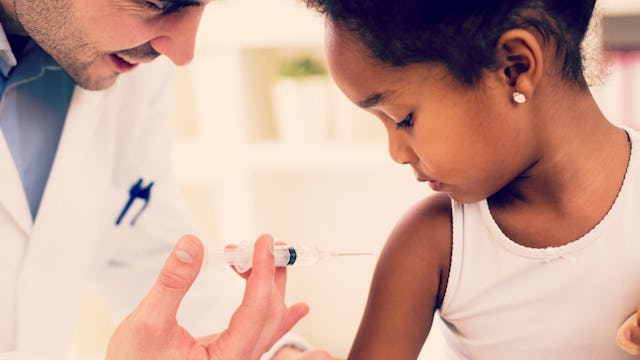As An Historian, This Is What I Want People To Understand About Vaccines

The vaccine debate recently hit home to my Facebook circle (so, you know, it must be serious now). As the arguments flew fast and furious (“The CDC is a giant conspiracy to sell vaccines!” “Science proves that vaccines are extremely effective and not dangerous!” “Basic sanitation eradicated measles, not vaccines!” “No, it didn’t!” “Vaccines cause autism!” “No they don’t!”), I couldn’t help but notice that all my historian friends fell firmly into the camp of pro-vaccines. Even the crunchy ones, even the woman who homeschools her kids and gave birth at home in an inflatable pool.
The reason for that is best summed up by my friend Kristen Wands, a curator in Wethersfield, Connecticut: “I read the letters and diaries of anguished 18th century parents who lost numerous children to diseases we can prevent and treat today. I know what a world without vaccines looks like, and you wouldn’t want to live there.”
Most of us don’t know what a world without vaccines looks like. We cruise along, fairly confident we’ll at least reach our three-score and twenty before the consequences of our trans-fat-loving lifestyles catch up with us, vaguely aware that if we don’t make it, it will most likely be because of a freak accident, not a desperate battle with infectious disease.
Historians, however, have a different perspective. As we research historic documents, especially personal correspondence, some of the most common sentences we come across are those like the following:
“Mrs. Milton Hay lost her youngest little girl last week. She was nineteen months old, and a perfect beauty.”
“Mary Edwards’ little girl died from the effects of scarlet fever night before last at Mr. Ninian Edwards. The only child!”
“Funerals are passing every day – sometimes thrice and four. There seems to be a great deal of sickness here — pneumonia and typhoid fever — are prevailing. Scarlet fever, diphtheria.”
“Sickness is yet very prevalent here. On Sunday, there were nine interments.”
“Whooping cough is carrying many a child to its grave this summer.”
These snippets are all from 19th century letters of the Edwards family of Springfield. I didn’t have to look hard for them, and I’m only quoting a fraction of the references to illness and death that I came across.
Nor are they unique. On the contrary, references to illness and death are ubiquitous in personal correspondence all over the country, well into the 20th century.
Our ancestors lived their whole lives acutely aware that death could come any minute. “How necessary to live in constant readiness for death’s summons,” wrote Helen Edwards. When Benjamin Edwards offered advice to his daughter, he assured her that she would come to appreciate the wisdom of his words “if you live.” When Helen sent birthday greetings to her grandson, she told her daughter to “give him my love, and tell him I hope that he may live to be a good useful man.”
Try to imagine, for a moment, if every time your child got a runny nose, you wondered if that illness would be his last. Try to imagine loving your children and grandchildren as fiercely as any parent does, but not daring to assume that these children would grow to adulthood. Try to imagine families who had not buried children being the exception, not the rule. Try to imagine if a quarter of the children you know would not live to see their fifth birthdays.
That’s what the world without vaccines looked like. The fact that we can’t imagine such a world is an indicator of just how effective vaccines truly are.
“Health is better than wealth,” Helen Edwards wrote after yet another friend died of infectious disease. As an historian, as a mother, I couldn’t agree more. Those vaccines that people are refusing today? Our ancestors, who watched their children die of the diseases they prevent, would have given just about anything to have had them.
This article was originally published on